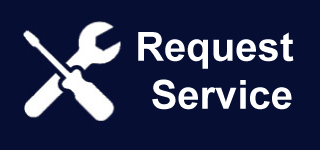With an incredible number of Americans unemployed and dealing with pecuniary hardship during the COVID-19 pandemic, pay day loan loan providers are aggressively targeting vulnerable communities through internet marketing.
Some specialists worry more borrowers will begin taking out fully payday advances despite their high-interest prices, which occurred through the crisis that is financial 2009. Payday loan providers market themselves as a quick fix that is financial providing fast cash on the web or in storefronts — but usually lead borrowers into financial obligation traps with triple-digit interest levels as much as 300% to 400percent, claims Charla Rios of this Center for Responsible Lending.
“We anticipate the payday lenders are likely to continue steadily to target troubled borrowers because that’s what they’ve done most readily useful considering that the 2009 crisis that is financial” she says.
Following Great Recession, the jobless price peaked at 10% in 2009 october. This April, jobless reached 14.7% — the rate that is worst since month-to-month record-keeping began in 1948 — though President Trump is celebrating the improved 13.3% price released Friday.
Not surprisingly general enhancement, black colored and brown workers are nevertheless seeing elevated unemployment rates. www.texascartitleloan.net/ The rate that is jobless black People in the us in May ended up being 16.8%, somewhat greater than April, which speaks to your racial inequalities fueling nationwide protests, NPR’s Scott Horsley reports.
Information on what many individuals are taking out fully pay day loans won’t come out until next 12 months. The data will be state by state, Rios says since there isn’t a federal agency that requires states to report on payday lending.
Payday lenders often let people borrow cash without confirming the debtor can back pay it, she claims. The lending company gains access towards the borrower’s bank-account and directly collects the amount of money through the payday that is next.
Whenever borrowers have actually bills due throughout their next pay duration, lenders frequently convince the debtor to obtain a brand new loan, she says. Studies have shown a typical borrower that is payday the U.S. is caught into 10 loans each year.
This debt trap can cause bank penalty costs from overdrawn reports, damaged credit as well as bankruptcy, she states. A bit of research also links payday advances to even even even worse real and psychological wellness outcomes.
“We understand that individuals who sign up for these loans may also be stuck in type of a quicksand of consequences that result in a financial obligation trap they’ve an exceptionally difficult time leaving,” she claims. “Some of these term that is long are actually serious.”
Some states have actually prohibited lending that is payday arguing so it leads individuals to incur unpayable financial obligation due to the high-interest charges.
The Wisconsin state regulator issued a statement warning payday loan providers not to ever increase interest, costs or expenses throughout the COVID-19 pandemic. Failure to comply can cause a permit suspension system or revocation, which Rios believes is really a step that is great the possible harms of payday financing.
Other states such as for example Ca cap their attention prices at 36%. There’s bipartisan support for a 36% rate cap, she says across the nation.
In 2017, the Consumer Financial Protection Bureau issued a guideline that loan providers need certainly to consider a borrower’s capability to repay a quick payday loan. But Rios claims the CFPB may rescind that guideline, that may lead borrowers into financial obligation traps — stuck repaying one loan with another.
“Although payday marketers are promoting on their own as a quick financial fix,” she claims, “the truth of this situation is most of the time, folks are stuck in a financial obligation trap which has had resulted in bankruptcy, which has generated reborrowing, that features resulted in damaged credit.”








